|
In answer to a question regarding Palestinian taxes collected and held by
Israel, Livni said that the Israeli government has already stated that if the
Palestinian government would not be a Hamas government, and if it would accept
the conditions set by the Quartet, there would be no reason not to transfer the
funds to the PA. There is no change in this position.
FM Livni also related to the ongoing arms smuggling from Egypt to the
Gaza Strip through the Philadelphi corridor and stressed the importance
of increased Egyptian intervention.
Concerning the possibility of
stationing an international force there, Livni pointed out that the
effectiveness of such a force must be carefully examined, as to whether
such a force could function better than mere international observers who
have no real power to act.
*Alberico Alves photo via
Israel's Ministry of Foreign Affairs
The foregoing article was provided by Israel's Ministry of Foreign
Affairs
|
International and
National |
____________________________________________________________________
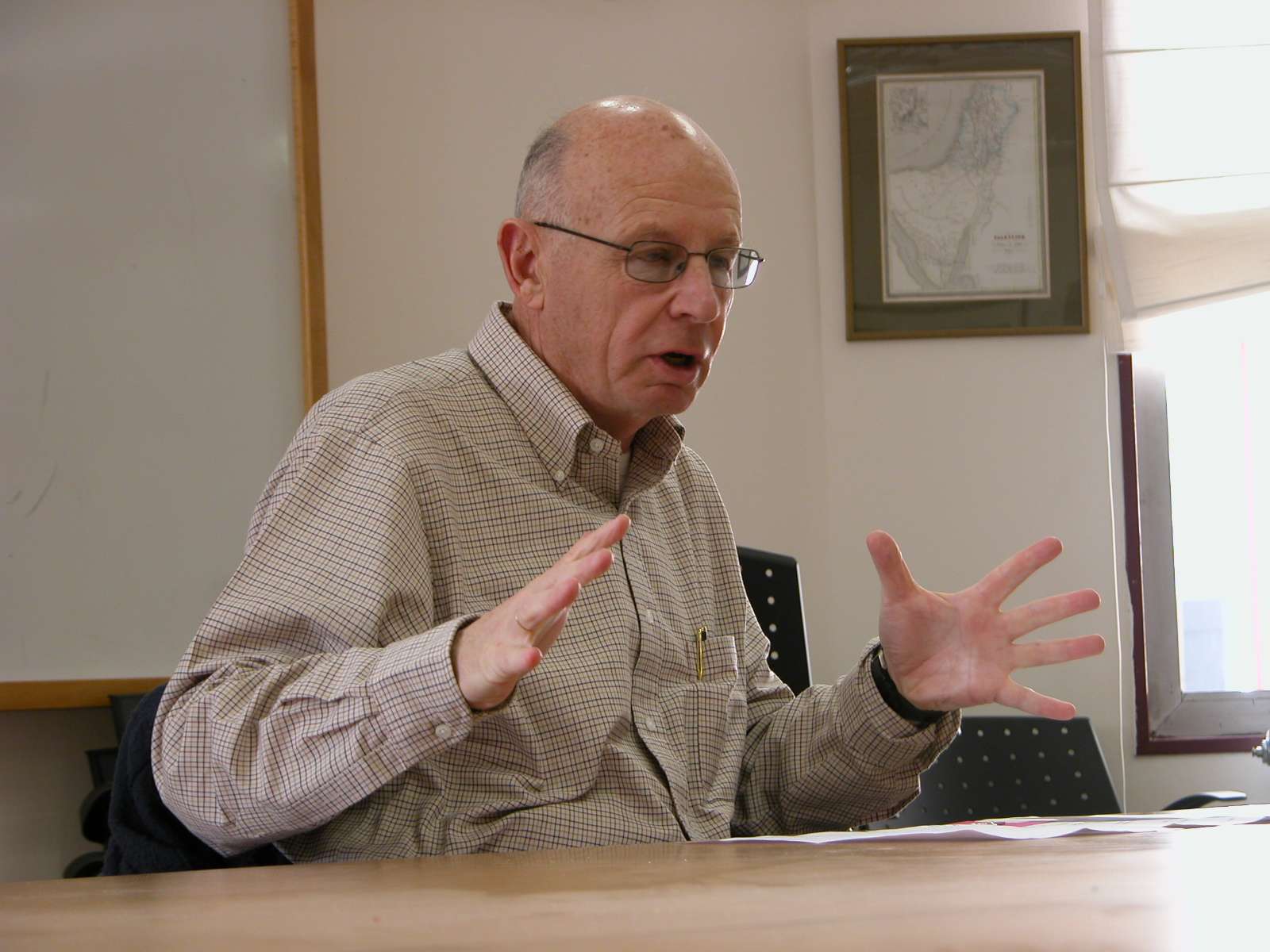
Letter from
Jerusalem
_________________By Ira Sharkansky____________
Is Israel waiting for a causus belli to deal with Gaza?
JERUSALEM—The bloodshed and the
destruction in Gaza should be no surprise. Properties belonging to
ranking Fatah personnel, and to Yassir Arafat, have been looted and
burned. We see pictures of Palestinians walking away with television
sets, plumbing facilities, computers, and window frames. It's almost as
bad as New Orleans.
Heads of Arab governments are saying meaningless things about
negotiating peace between Hamas and Fatah. Fatah personnel who fled to
Egypt are being sent back to Gaza on the basis of Hamas promises that
they will not be harmed.
Hamas and its friends have their own conception of what to do with
individuals they accuse of fighting against them, or cooperating with
the Israelis. I would not pay the insurance premiums of Palestinians who
the Egyptians are sending back.
From all signs, there are now two Palestines. One in the West Bank ruled
by Fatah, which may be strong enough there to hang on; and one in Gaza
ruled by Hamas. In both cases, "rule" is not what one expects in orderly
countries. Extended families control their neighborhoods, are armed to
the teeth, hold hostages (like the Israeli soldier and the British
journalist), and are managing their own foreign policy.
Israeli leftists are expressing concern for their friends in Palestine,
but tending not to name their friends, perhaps out of fear that they
will mark them for something unpleasant in the extreme.
Israel controls the supply to Gaza of food, fuel, most of the
electricity, and much of the fresh water. It also controls the export of
agricultural goods that comprise an important part of Gaza's economy.
Some officials and commentators are saying that Israel should make its
activities contingent on the freeing of the Israeli soldier and the
stopping of rocket attacks on Israeli towns. Others are saying that the
IDF is planning a major attack that will destroy Hamas, and is waiting
for an appropriate causis belli. That can be any rocket sent toward
Israel. Even if its launch does not have Hamas finger prints, Hamas
would not have prevented it.
Optimists are saying that power will make Hamas more pragmatic; it has
to recognize Israel if it wants the people of Gaza to eat, drink, and
keep the lights burning.
Some Fatah officials and their families received Israeli permission to
flee Gaza for the West Bank via Israel. One ranking Fatah official said
that the "occupation" of Gaza by Hamas is so much more brutal than
Israeli occupation as to defy comparison. Another said that Fatah's
defeat in Gaza was due to the weakening of Palestinian security forces
by Israel's responses from the beginning of intafada. We must have done
something to justify the efforts of British academics to boycott Israeli
academics.
I recall the rice, flowers, and sweets that Lebanese threw on the first
Israeli soldiers who came to free them from Palestinian violence in
1982. Then came the roadside bombs.
It is unwise to predict anything at this point, other than uncertainty.
|
Buena Vista Hadassah
cordially invites you to hear
Rabbi Chaplain Joel D. Newman
based on his experiences in the war zone
"Passover in Iraq"
12:30 p.m., Tuesday, June 19
Vista Library, 700 Eucalyptus Avenue, Vista
Free refreshments
For further information: call Vivian (760) 967-0149
|
30 ways to save water
suggested by Jewish National Fund and International Arid Lands
Consortium
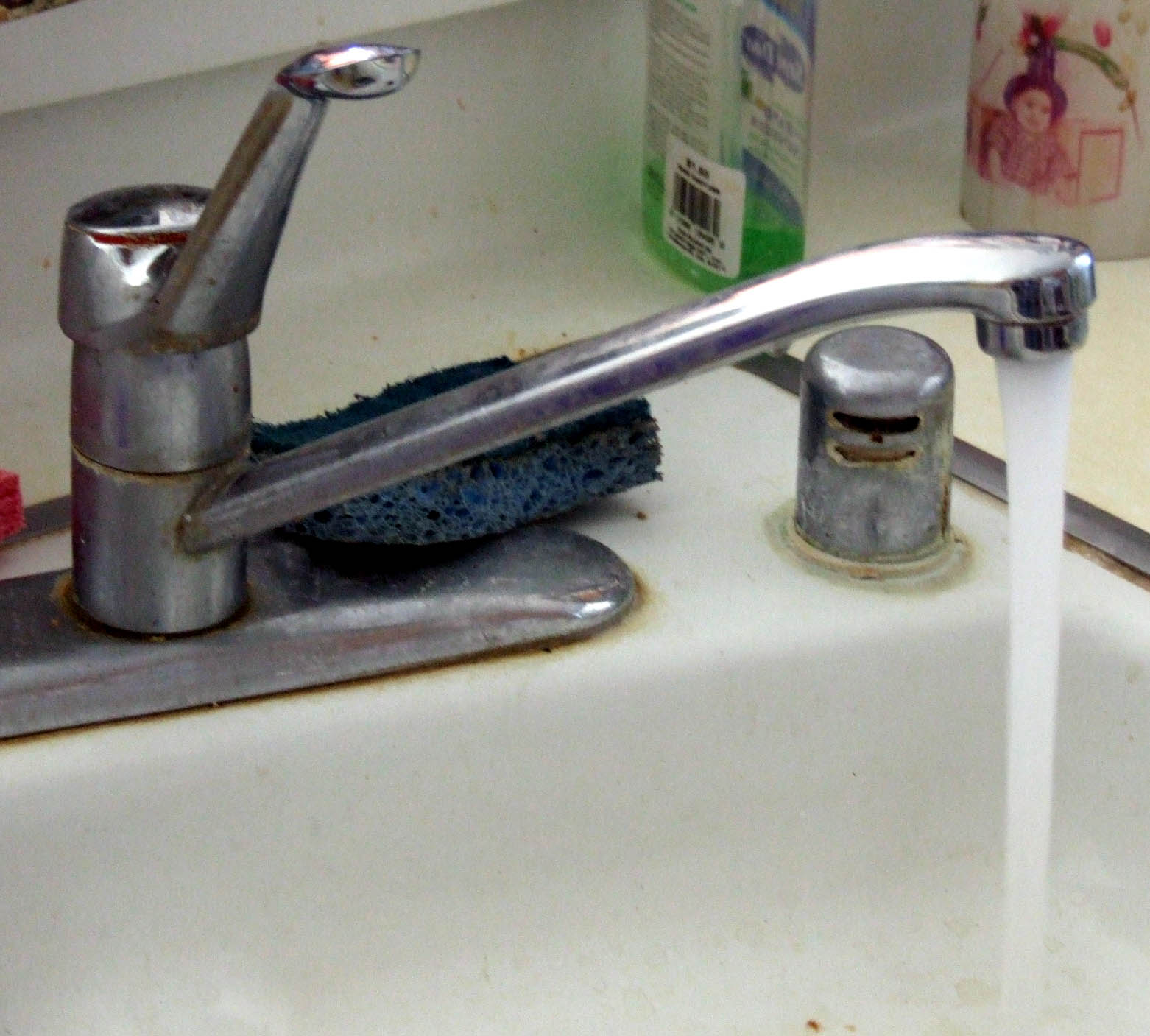
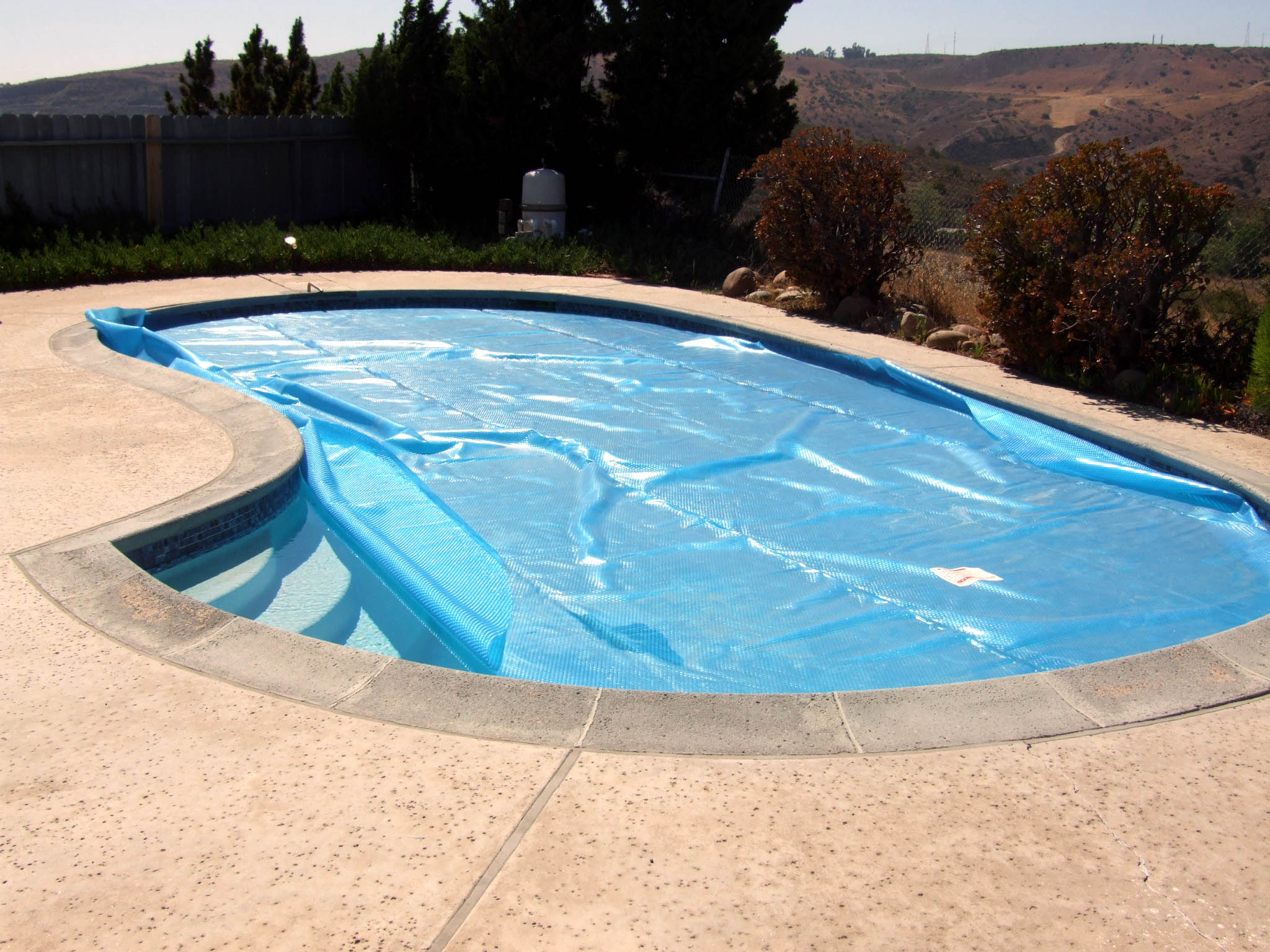
Don't: Leave water running
Do: Cover pool to prevent evaporation
NEW
YORK (Press Release)—Did you know that a faucet that leaks just
one drop per second can waste over 2,000 gallons of water per
year? That a leaking toilet can waste 200 gallons a day? Or that
an average shower uses 20-30 gallons of water?
Americans use an average of over 400 million gallons of water
each day; much of that water is wasted due to carelessness.
The
International Arid Lands Consortium (IALC) and the Jewish
National Fund (JNF) offer these simple water saving tips to
conserve our most valuable and vital natural resource:
Indoors
-
Turn faucets off when you
are not using them; for example, do not leave the water
running when washing dishes by hand or brushing your teeth.
-
Make sure to repair any
leaking faucets, pipes and toilets.
-
Defrost frozen food in the
refrigerator or microwave instead of running hot water over
it.
-
Dispose of toxic chemicals
properly; do not pour them down the drain.
-
Install water saving
fixtures such as ultra low consumption toilets, efficient
faucets and shower heads.
-
Do not throw trash into the
toilet as it will result in unnecessary and wasteful toilet
flushing; instead, dispose of trash in the proper
containers.
-
Take a quick shower rather
than a bath and save an average of 20 gallons of water.
-
Clean vegetables in a sink
or pan partially filled with water rather than running water
from the tap.
-
Re-use the water that
vegetables are washed in for watering houseplants or for
cleaning.
(Jump to
continuation)
___________
Even Yad Vashem can have a
typo, so verify listings
MEVASSERET ZION, Israel—Yad Vashem has a
website listing the names of three million of the six million Jewish victims
of the Holocaust. Each entry gives the individual’s name and place of residence,
as well as other pertinent details as recorded in the Page of Testimony
submitted for that person.
It comes as
a bit of shock to find one’s relatives commemorated on line. I remember bringing
the Pages of Testimony to my parents many years ago so that they could fill them
out for their parents and other relatives who were murdered. I recall, too, the
effort it cost them to renew those memories.
I wondered
then what Yad Vashem meant to do with the pages, though accepted that it was a
commendable endeavour, and possibly even helpful in some cases. All this was
long before the age of the Internet, indicating that someone was displaying
remarkable prescience at that time.
Commendable
though the project undoubtedly is, it is annoying to find that the information
was not keyed in accurately, and that my father is listed as the daughter of his
mother and my mother as her parents’ son.
Israel has
many organisations and institutions dedicated to commemorating the Holocaust. It
has marked an annual Holocaust remembrance day ever since the State was
established. Israel is a young country, a Jewish country and a country of
immigration, so that a large part of the adult population can be defined as
Holocaust survivors in the broadest sense of the term.
Survivors
are not solely those who went through the concentration camps, as some tend to
think. Any Jew who lived in Europe before or during the Second World War, or is
the descendant of people who did, can be defined as a survivor. And there is a
growing network of organizations in Israel that focus on the psychological
concerns of the second and third generations. It cannot be denied that the
shadow of that terrible event continues to hang over many of Israel’s denizens
and to influence its politics.
The foregoing article was reprinted from the
AJR
Journal (Association of Jewish Refugees) in England.

|
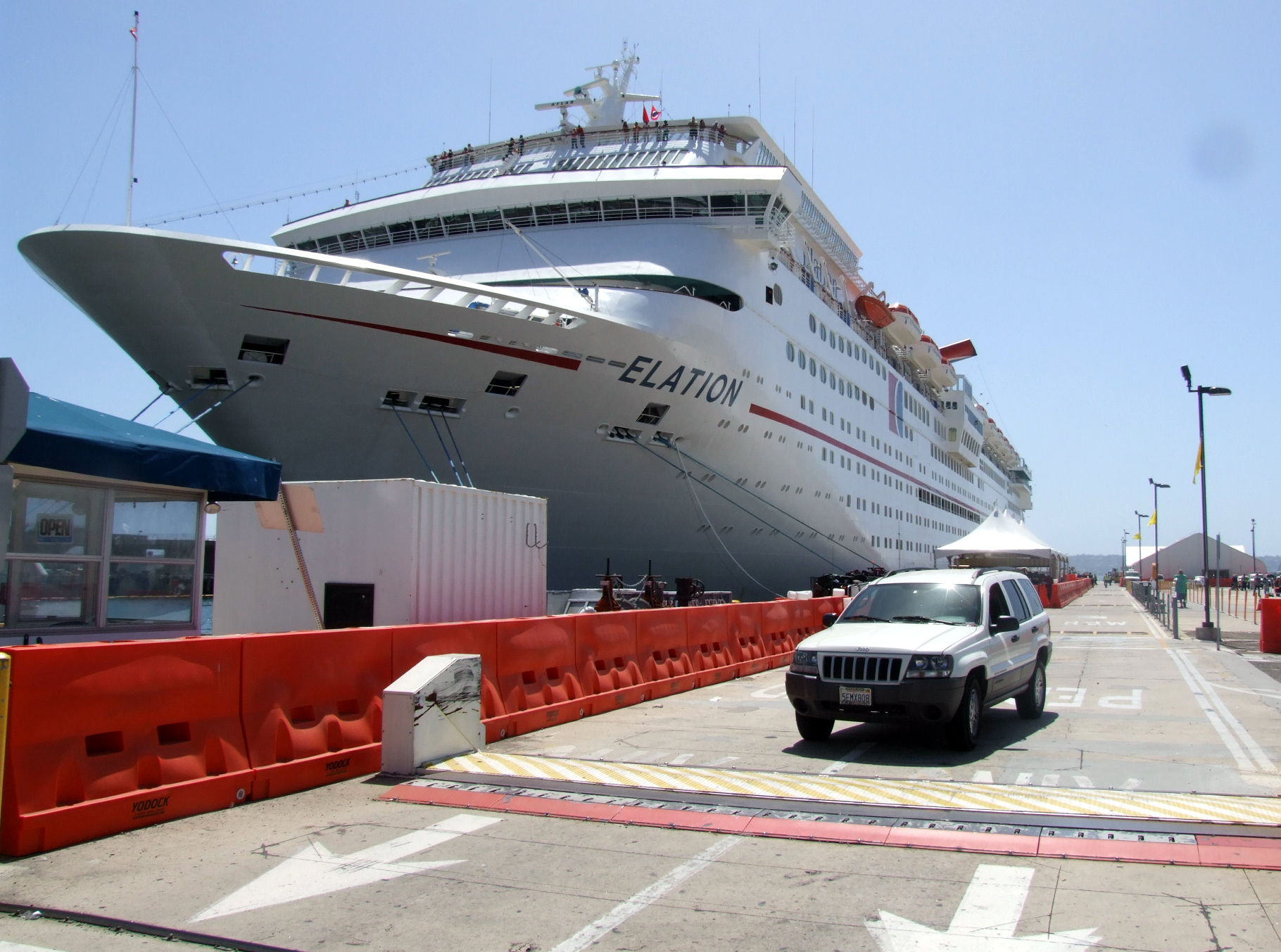 Your specialist in Your specialist in
cruises and tours
Upcoming 2007 San Diego sailings:
Now-December 29: Carnival:
Elation: multiple 4-and 5-day sailings, round trip to Mexico.
Sept 23-Dec 30: Princess Cruises: Dawn Princess: 7-day round trip to
Mexico
Sept. 28: Celebrity Cruises: Summit: 14-day Hawaii
Sept. 29: Holland America: Oosterdam, 7-day Mexico. |
|
Commentary
We welcome your
comments or replies |
Reply
to Alvarado de Soto: U.S. is pro-Israel and
is not neutral between its friend and terrorists
[Ed. Note: this is part of a series about the demise of the
Palestinian experiment in self-government and the implications for U.S.
policy in the region.]
By Shoshana Bryen
WASHINGTON, DC (JINSA)—Alvaro de Soto, a former UN envoy to the Middle
East Quartet and the Palestinian government, accused the Bush
administration in a report of pushing the Quartet "from a neutral to a
pro-Israel posture." According to The Washington Times, he
"warned that a perception of UN partiality would discredit peacekeeping
efforts and tarnish the office of the secretary general." And he
complained that U.S. pressure had "limited his own ability to deal
directly with the Hamas-led Palestinian government."
Leave aside the ability of anyone to tarnish the office of the secretary general
of the UN more than Kofi Annan. And leave aside that there is more than a
"perception of UN partiality" and it isn't toward Israel. And leave aside that
UN peacekeeping efforts are discredited by the behavior of UN peacekeepers that
permitted a massacre in Bosnia, left Rwanda to genocide and appear unable to
keep their hands off young women in the areas of their deployment.
The worst part about Mr. de Soto's "analysis" is that he misunderstands
completely the role and nature of the United States. We are NOT
"neutral" between a democratic member-state of the UN and what is at
best a terrorist organization trying to remake itself into a
semblance of a government while pursuing a war against its ostensible
peace partner. We are NOT neutral between our friend and ally Israel and
the PLO - whether Fatah-dominated (with which we were willing to work)
or Hamas-dominated (with which we are not). That is not only the
American prerogative, but good policy.
Furthermore, the American commitment to Palestinian statehood was never absolute
or unconditional and it wasn't to the Palestinians; it was to Israel.
Israel (at Oslo) offered the Palestinians recognition for their national
aspirations in exchange for equal recognition of Israel's nationalism. U.S.
support for Oslo came after Oslo. Although Israel made the Palestinians a much
better offer than the Jordanians and Egyptians ever did between 1948 and 1967,
the Palestinians didn't take it - and the UN didn't care.
But the U.S. did, and does, care. Our policy is that the Palestinians
have to accept "Israel's right to exist" (a demeaning phrase; we prefer
"the legitimacy of Israeli sovereignty") with security. We have pushed,
pressured (Israel), coddled (the Palestinians) and paid for the
experiment, which is now a failure NOT because Israel didn't do enough,
but because Fatah was never going to be Israel's partner and Hamas isn't
looking for partnership with Fatah in building a state in part of
Palestine. Hamas is an international Islamist organization seeking
absolute control of the levers of Palestinian governance in its effort
to erase Israel. The U.S. isn't and shouldn't be neutral about any of
it.
Mr. de Soto complains about pressure from U.S. envoys David Welch and
Elliot Abrams to isolate Hamas. Well done, guys. And finally, Mr. de
Soto complains that he didn't think the report would leak. "I would not
have been so candid," he said candidly. We're glad he was and glad to
find our government on the wrong side of a UN bureaucrat.
The foregoing article was provided by the Jewish Institute for
National Security Affairs
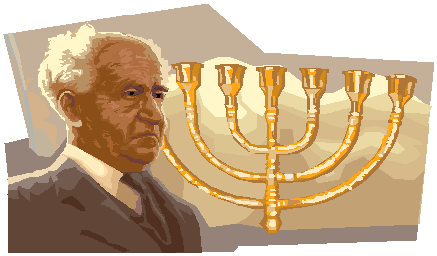 Jews
in the News Jews
in the News
---------------------------------------------------------------------------------------------------------------
Like you, we're pleased when members of our community are
praiseworthy, and are disappointed when they are blameworthy.
Whether
it's good news or bad news, we'll try to keep track of what's being said in
general media about our fellow Jews.
Our news spotters are Dan Brin in Los Angeles, Donald H. Harrison in San Diego,
and you. Wherever you are, if you see a story of interest, please send a
summary and link to us at sdheritage@cox.net
and we'll acknowledge your tip at the end of the column.
To
see a source story click on the link within the respective paragraph.
______________________________________________________________________________________________
* Rudolf
Arnheim, a leading cultural
critic in pre-Nazi Germany who became an important academic theorist in the
United States concerning the interplay between art and perception, has died
at age 102. His
obituary by Adam Bernstein of The Washington Post is in today's
San Diego Union-Tribune.
*The
Dead Sea Scrolls-writers never dreamed that their handiworks someday
would cause something called a "parking jam" in a place called America in
the "New World." But that's what is predicted throughout the rest of
this year in Balboa Park after the Dead Sea Scrolls exhibit opens. The
Natural History Museum is proposing that a temporary parking lot be created
to ease the expected crunch. The
story
by Jeanette Steele is in
today's San Diego Union-Tribune.
*Malcolm Hoenlein, chairman of the Conference of Presidents of
Major American Jewish Organizations, says U.S. President George W. Bush has
not given up on achieving peace between Israelis and Palestinians,
notwithstanding the dramatic developments in Gaza. "He's still
wrestling with it," Hoenlein said following a private meeting between
members of his organization and White House officials. The
story by Michael Abramowitz is in today's Washington Post.
*The United States should keep its aircraft carriers off the coast of
Iran and should let it be known that 60 years after the Holocaust, Israel
has the right to protect itself against a country that is trying to develop
a nuclear bomb and wipe Israel off the map. Those are two of the
recommendations in
a paper by Victor Davis Hanson, a senior fellow at the Hoover
Institution. The paper is reprinted in today's San Diego
Union-Tribune.
*Reader responses to stories and past letters in today's
letter-to-the-editor section of the San Diego Union-Tribune
regarding both the 40th anniversary of the attack by the Israel Defense
Forces on the USS Liberty and the Middle East conflict generally
found pro-Israel positions taken by letter writers Stuart Greenbaum and
Gregory Hirsch, and an opposition position taken by Dane Tovey
*Before leaving Israel for meetings in the United States with President
George W. Bush and at the United Nations with Secretary General Ban Ki-Moon,
Israel's Prime Minister Ehud Olmert said the decision by Mahmoud
Abbas to form a new government without Hamas provides Israel with a "partner
for peace." The Associated Press
story by Karen Laub is in today's San Diego Union-Tribune. That
newspaper also includes an
analysis of the current situation by Steven Erlanger of the New York
Times News Service. In the Insights section of the San Diego
Union-Tribune, an
article by columnist Robert Caldwell says the Hamas victory in Gaza is
part of a larger pattern of Islamists inspired by Iran and Syria pushing
aside secular governments.
*Television
journalist Barbara Walters now has her star on Hollywood's Walk of
Fame. The
story is in the Public Eye section of today's San Diego
Union-Tribune.
Thanks to today's tipster, Rees Clark.
_________________________________________________
The Jewish Grapevine
 -------------------------------------------------------------------------------------------------------------
-------------------------------------------------------------------------------------------------------------
BASEBALL JEWS—Baseball
commissioner Bud Selig, in attempting to force Jason Giambi to meet with
former U.S. Senator George Mitchell to discuss steroid use in baseball, really
is trying to find a "fall guy" who can help him say to Congress that the matter
has been dealt with. That is the thrust of an
opinion piece by sports columnist Nick Canepa in today's San Diego
Union-Tribune. In other stories or chartsof interest in that newspaper
today:
Shawn Green of the New York Mets is tied with Albert Pujols of the St.
Louis Cardinals with the 14th highest batting average in the National League at
.303. That's well off the league leading .358 pace being set by
Matt Holliday of the Colorado Rockies...Brad
Ausmus hit three times in four plate appearances, scoring two runs and
knocking in his 15th RBI, as his Houston Astros defeated the Seattle Mariners
9-4..Relief pitcher
John
Grabow of the Pittsburgh Pirates gave up two runs in an inning and a
third of work en route to a 6-1 Chicago White Sox victory in an interleague
game...
CROSSING DIVIDES—San
Diego Union-Tribune feature writer Peter Rowe writes about transsexual Bobbi
Swan who formerly was Robert Schwanhausser. Another divide that s/he
crossed was that between Arabs and Israelis, selling drones to both sides
while working for Ryan Aeronautics. Here's a link to
the
story.
IN MEMORY—Meyer Rosenzweig,
72, of San Diego died June 4, leaving his wife Marilyn, sons Michael and Jay,
and sister Ruth Katzenberg. A short
obituary is in today's San Diego Union-Tribune.

_____________________________________________________________________________
 The
Jewish
Citizen The
Jewish
Citizen
by Donald H. Harrison
____________________________________________________________
Don't spill the wine on the Lamborghini's leather
SAN DIEGO—For Mikael Besnainou, who serves as the North American
representative for his French family’s haute couture line of fine
accessories for upper-class canines, there have been some occasional
moments of stress in becoming, at the tender age of 21,
the president and chief executive officer of the Jewish American Chamber
of Commerce.
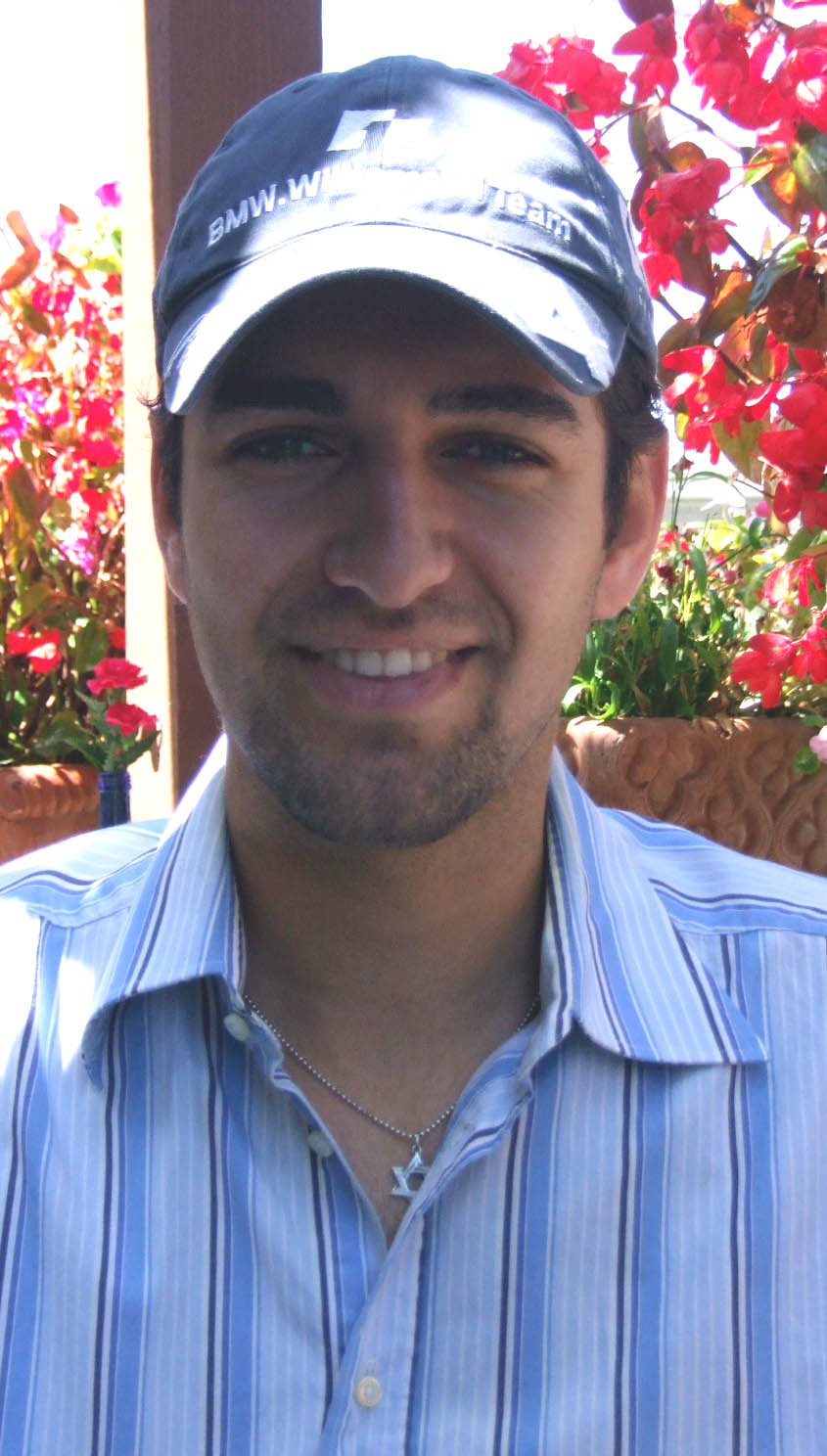 Recently,
as new members of his San Diego-based organization gathered for a mixer
at Symbolic Motors, a La Jolla dealership for Lamborghinis and other
fine imported cars, Besnainou wondered if maybe the wine and
cheese menu wasn't really the smartest choice for the occasion.
Couldn’t wine stain those inviting leather seats? Recently,
as new members of his San Diego-based organization gathered for a mixer
at Symbolic Motors, a La Jolla dealership for Lamborghinis and other
fine imported cars, Besnainou wondered if maybe the wine and
cheese menu wasn't really the smartest choice for the occasion.
Couldn’t wine stain those inviting leather seats?
Ahh, but there was no problem, everyone was careful, said Besnainou in
the thick French accent that is both charming and sometimes difficult
for American ears to understand precisely.
In fact, he smiled, the automobile dealer was quite happy. The sale of
three fine imported cars stemmed from that mixer.
Mikael Besnainou
“Partnership! Co-marketing!” these are words that flow easily from the
lips of this recent immigrant to San Diego, who studied business at the
University of San Diego before deciding with Martin Hare, a financial
advisor at
Merrill Lynch, to launch a business organization that celebrates Jewish
American culture but which is open to everyone.
He says
the organization has grown to approximately 550 members in a year’s time—not bad
considering that initially, some local members of the Jewish community told him
that he was crazy, that the last thing Jews needed was another organization—and
especially not one for business.
They said “Jews have their own way to network here” through temple memberships,
the United Jewish Federation and other organizations, Besnainou recalled.
The first mixer he put together drew, in addition to the organizers, the
representatives of only three businesses. But Besnainou said he wasn’t
discouraged. “I learned I would have to market differently,” he said. As a
result, he decided events should have more to lure people than just the chance
to schmooze. Thus, he decided, attendees should be given the chance to slide
behind the wheel of a Lamborghini at the second mixer.
The Jewish
American Chamber of Commerce also stages joint promotions with such arts venues
as the San Diego Opera and the La Jolla Playhouse—both of which appeal to an
upper demographic audience. And, in what may be an example of noblesse oblige, it also
engages in fundraising for Jewish causes such as the House of Israel in Balboa
Park.
If all this sounds terribly chic and maybe overly expensive, here’s a
surprise. Membership fees are geared more to the budgets of wannabe executives
than those who have already arrived. A year’s business membership, for example,
is $100.
A student of the art of the transaction, Besnainou said mixers such as one
featuring a behind-the-scenes tour of the opera provide everyone with something they
want. The arts organization gets to meet ambitious business persons who might
be attracted as patrons. In addition to the opportunity to exchange business
leads with each other, the chamber members get an interesting place to
meet—something out of the ordinary.
Besnainou volunteers his efforts for the Chamber, a good deed which brings its
benefits, he says with a smile. There are many customers in La Jolla, Rancho
Santa Fe, and other areas of San Diego County where women would just love to
have a fine handbag that perfectly matches the collar on their little
poodle—and Dog in Paris, one of his family’s businesses, sells just such
matching accessories. But beyond that, through the Chamber, Besnainou gets to
meet older people who share his entrepreneurial enjoyments.
The son of a Tunisian father and Russian mother, David and Beatrice, who met when the father sold
his mother a “car at one of his dealerships,” Besnainou has a natural feeling
for the automotive world and for other family enterprises. As a boy, he said, he
enjoyed selling cars on the sales floors of such family agencies as CASP and
Paris Est Motors; customers evidently enchanted that one
so jeune could seemingly know so much. Later, Besnainou taught himself
another facet of the automobile game. He began buying used cars, fixing them
up, driving them for a while, and then selling them for a profit.
Although his father's cousin, Pierre Besnainou, is the president of the European
Jewish Congress, Mikael said he has become far more identified with the Jewish
community here in San Diego than he was in France. Openly wearing a Magen David around his neck, as he does
in San Diego, might have been drawn an insult in France. While that’s possible
in San Diego, it is far less likely, he says.
The organized Jewish community is yet another beneficiary of the Jewish American
Chamber of Commerce, he suggests. For whatever reason, a lot of Jews simply
aren’t affiliated with synagogues or other traditional Jewish organizations, he
noted
Gathering with other business people provides these unaffiliated Jews with easy
entry to the organized community—and who knows where such involvement will take them
once they start identifying themselves as Jews.

|
Arts,
Entertainment & Dining |
At the museums
94-foot scroll by Ruth Weisberg
provides
centerpiece for retrospective at Skirball
LOS ANGELES (Press Release)—Ruth Weisberg Unfurled, an exhibition presenting
three decades of work by Los Angeles artist Ruth Weisberg (b. 1942), dean of
the Roski School of Fine Arts at the University of Southern California, will
be on view at the Skirball Cultural Center through July 29. The
retrospective centers on The Scroll, a 94-foot-long mixed-media drawing,
which will be exhibited for the first time in 20 years. Considered by
critics to be Weisberg’s most significant and challenging body of work, The
Scroll will be featured in the context of more than 30 paintings, drawings
and prints that explore related issues.
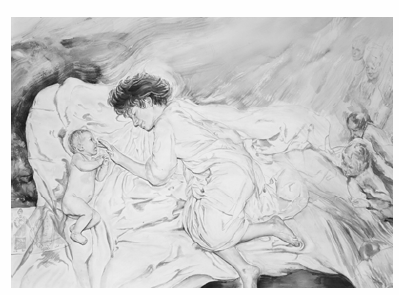 Among
the highlighted themes of the exhibition are: Weisberg’s life story and its
convergence with art history and Jewish memory; the parallels she draws
between contemporary life and the Bible; her desire to provide an identity
to those who perished in the Holocaust; and her fervent belief in the
possibility of new beginnings. Among
the highlighted themes of the exhibition are: Weisberg’s life story and its
convergence with art history and Jewish memory; the parallels she draws
between contemporary life and the Bible; her desire to provide an identity
to those who perished in the Holocaust; and her fervent belief in the
possibility of new beginnings.
Cited by art historian and Rutgers University professor emeritus Matthew
Baigell as “one of

the most important Jewish works of art made at the end of the 20th century,”
The Scroll was completed in 1987 and was acquired by the Skirball Museum
that same year. Employing an embroidered, 18th-century Torah binder from the
museum’s collection as a recurring motif, the work envelops the viewer in a
powerful narrative, much like the Jewish Torah scroll. It entwines imagery
from Jewish life-cycle events and holidays with Weisberg’s experiences as an
American Jewish woman. Birth, childhood, coming of age, marriage, adulthood
and death—in conjunction with scriptural motifs, Jewish history and rabbinic
legend—are chronicled in the artist’s classical drawing style. Inspired by
Renaissance and Roman mural cycles, Weisberg risked presenting Jewish themes
in a new, almost cinematic format in The Scroll.
Originally displayed in New York in 1987–1988 and Los Angeles in 1989, The
Scroll is a challenging work to exhibit, largely due to its scale. Designed
to be read continuously from right to left, like the Torah, it was installed
at the Skirball in an enveloping semi-circular space, with nine-foot,
double-height panels at its center. The accompanying works in the exhibition
are organized thematically, demonstrating how Weisberg has developed her
ideas over time and tracing visual motifs, narrative themes and symbolic
imagery evident in The Scroll from their origins to their most recent
evolution.
“The Skirball Cultural Center is pleased to present The Scroll in its
entirety for the first time in 20 years, along with selected highlights from
Weisberg’s career as an artist,” remarks Uri D. Herscher, Skirball Founding
President and CEO. “Her art celebrates the renewal and meaning of an ancient
heritage.”
Developed through her identification as a Jewish, feminist, classical
artist, Weisberg’s work is richly layered, as will be illuminated throughout
the exhibition. Weisberg has said, “I am nourished by the history of the
Jews, the history of art and by the unwritten history of women.”
The convergence of Weisberg’s personal history with Jewish history and
liturgy is a central theme of the exhibition. In commingling the two,
Weisberg merges the sacred and the autobiographical. This enables her
viewers to extrapolate the universal from the particular and identify with a
living tradition. The dancers at a wedding depicted in The Scroll, for
example, are not only our contemporaries, but also the Biblical Miriam and
her Exodus companions. In another panel of The Scroll, contemporary Torah
ritual is observed by a group of rabbis from centuries past. Of her layering
of Biblical narrative, 20th-century history and events from her own life,
Weisberg has spoken of her desire to “express a kind of synchronic time,
where all periods interpenetrate.”
The redemptive power of memory is another important theme. Inspired by her
grandmother’s Yizkor book (an example of memorials created for specific
shtetls), Weisberg researched the Eastern European villages from which many
Jewish Americans emigrated. In that process, she discovered a photograph
that has become a recurring motif in her work, a group of early 20th-century
children who likely died in the Holocaust. First portrayed in her
limited-edition 1971 book of etchings, The Shtetl: A Journey and a Memorial,
this same group of children appears in her 1984 painting series, Circle of
Life, as well as in The Scroll and many other works. By rescuing these
children from anonymity and keeping alive their memory, Weisberg performs a
healing act of redemption.
Throughout the exhibition, life’s journey is portrayed in both personal and
historical terms. Weisberg’s 2001 illustrations for a Passover Haggadah for the
Reform Movement feature contemporary portraits instead of Biblical personages.
Time periods merge as these contemporaries both enjoy the Passover meal and
reenact the ancient story of the Exodus. In The Scroll, a contemporary birth
scene overlaps the parting of the Red Sea, denoting the birth of the Jewish
people. Redemption is seen in the contrast of concentration camp uniforms with
an ancient view of Jerusalem, while revelation is portrayed by layering a
wedding ceremony over a tree of life derived from Kabbalah, Jewish mystical
teachings.
As critic Thalia Gouma-Peterson has suggested about The Scroll, the artist
“wished to enrich the present through the past and to rejuvenate the past
through the present.” Life-cycle events—whether personal or historical—are
always seen as circular in Weisberg’s work. Ends engender new beginnings, as
with the Torah binder itself, which is made from the fabric used to swaddle a
newborn boy in the circumcision (bris) ceremony and often employed as a funeral
shroud at life’s end. In a single mixed-media work, 1492/1942: Bound for Nowhere
(1991), an image of Holocaust refugees boarding a ship is presented alongside a
Columbus-era vessel, recalling the historic expulsion of the Jews from Spain as
well as the promise of America.
Coming of age at the height of the women’s movement, Weisberg internalized many
of its messages. Her work frequently focuses on female protagonists, as well as
on her multiple roles as mother, artist and Jewish woman. In The Scroll, she
relays Jewish history with a female voice, presenting a woman rabbi, a girl’s
Bat Mitzvah ceremony and women in roles previously held only by men. In Sisters
and Brothers (1994), she links the well-known stories of Jacob and Esau with
those of Leah and Rachel. Weisberg even casts herself in the place of Diego
Velázquez in her lithographic re-interpretation of his famous Las Meninas
painting, Disparity Among the Children (1975).
As important as her Judaism is Weisberg’s identification with traditional,
figurative art. She has lived and studied extensively in Italy, and the
influence of frescoes and the atmospheric sfumato of Leonardo da Vinci may be
seen in the thin washes of color she employs. Just as The Scroll hearkens back
to historical narrative cycles, The Circle of Life references the Renaissance
“Ages of Man” concept and Edvard Munch’s Frieze of Life. Often, the artist
directly quotes art history, as in Time and Time Again (2003) from the Amore
Sacro e Profano series, which is inspired by a 16th-century Titian masterpiece.
Most significantly, in her choice to work in a classic, realist mode, Weisberg
affirms the humanistic values first laid out in the Renaissance.
Ruth Weisberg is Dean of the Roski School of Fine Arts of the University of
Southern California. Known for her work in painting, printmaking, drawing and
large-scale installations, she has recently completed a major mural commission
for the New York Jewish Federation. Recent honors include Doctor of Humane
Letters, honoris causa, Hebrew Union College, 2001; College Art Association
Distinguished Teaching Award, 1999; and Visiting Artist at the American Academy
in Rome, 1995, 1994 and 1992.
Weisberg has exhibited actively, with over 70 solo and 160 group exhibitions.
Her work is included in 60 major museum and university collections, including
Fine Arts Museums, San Francisco; The Art Institute of Chicago; Bibliothèque
Nationale de France; Istituto Nationale per la Grafica, Rome; Los Angeles County
Museum of Art; The Metropolitan Museum of Art, New York; National Gallery of
Art, Washington, D.C.; and Whitney Museum of American Art, New York.
The
foregoing article was provided by the Skirball Cultural Center
|
If you have a serious interest in Jewish
culture
and you would enjoy writing reviews, attending premieres,
reporting on special events, then
San
Diego Jewish World
may have just the volunteer position for you.
We're looking for columnists and writers on a wide variety of subjects
who can help us interpret the Jewish experience. Please contact
Don Harrison, editor, at (619) 265-0808 or via this
email
link if you are interested in
joining our creative team
|
Water Conservation...
(Continued from above)
-
Insulate water pipes; it’ll
make your water hotter faster and avoid the waste that comes
when heating water.
-
Instead of waiting for tap
water to get cold enough for drinking, keep a bottle of
water in the refrigerator.
-
Whenever possible, compost
food scraps or dispose of them in the garbage rather than
using the garbage disposal, which requires a high level of
water for operation.
-
Only run your dishwasher
when it is full to make the best use of water, energy and
detergent.
-
Cut down on the amount of
rinsing you do before loading the dishwasher. Most modern
dishwashers do an excellent job of cleaning dishes, pots and
pans.
-
Wait until you have a full
load of laundry before running the machine to save both
water and energy. If you can't wait for a full load, use the
right water level to match the size of the load.
-
When washing clothes by
hand, the water should not be left running. Fill a laundry
tub with water, and re-use wash and rinse water as much as
possible. Likewise with the dishes.
Outdoors
-
Water your lawn early in the
morning or at night to avoid excess evaporation. Similarly,
do not water your lawn on windy days as it can also help to
avoid excess evaporation.
-
Don't follow a fixed
watering schedule. Water when the grass or plants show signs
of needing it. Over watering is bad for plants and lawns. It
promotes shallow root growth, making your lawn less hardy.
To determine if your lawn needs to be watered, simply walk
across the grass. If you leave footprints, it's time to
water.
-
Cover swimming pools to
minimize the loss of water due to evaporation. Also install
a more efficient water saving filter.
-
Use a broom rather than a
hose to clean sidewalks or driveways.
-
Install efficient irrigation
devices that can be adjusted according to seasonal
irrigation needs. Install moisture sensors in each
irrigation zone (sunny, shady, etc.) to better determine
irrigation needs.
-
Do not leave sprinklers or
hoses on unattended; it can result in leaks and over
watering.
-
Maintain a lawn height of 2
1/2 to 3 inches to help protect the roots from heat stress
and reduce the loss of moisture to evaporation. Allowing the
grass to grow slightly taller reduces water loss by
providing more ground shade for the roots and by promoting
water retention in the soil.
-
Watering in several short
sessions rather than one long one allows the lawn to better
absorb water and helps reduce the risk of over watering.
-
Check sprinkler system
valves periodically for leaks and keep the heads in good
repair.
-
Make sure your sprinkler is
placed so it only waters the lawn, not the pavement.
-
Avoid sprinklers that spray
a fine mist, which increases evaporation.
-
Wash your car with a bucket
of soapy water and use a nozzle to stop the flow of water
from the hose between rinsing.
-
Consider washing your car on
the lawn, if possible, to reduce runoff.
-
Consider Xeriscape
landscaping which takes into consideration how the yard will
be used and how it can provide the greatest benefit with the
least amount of maintenance. This includes growing plants
that are indigenous to the area and appropriate maintenance
to reduce water use.
The
preceding article was provided by the Jewish National Fund
|



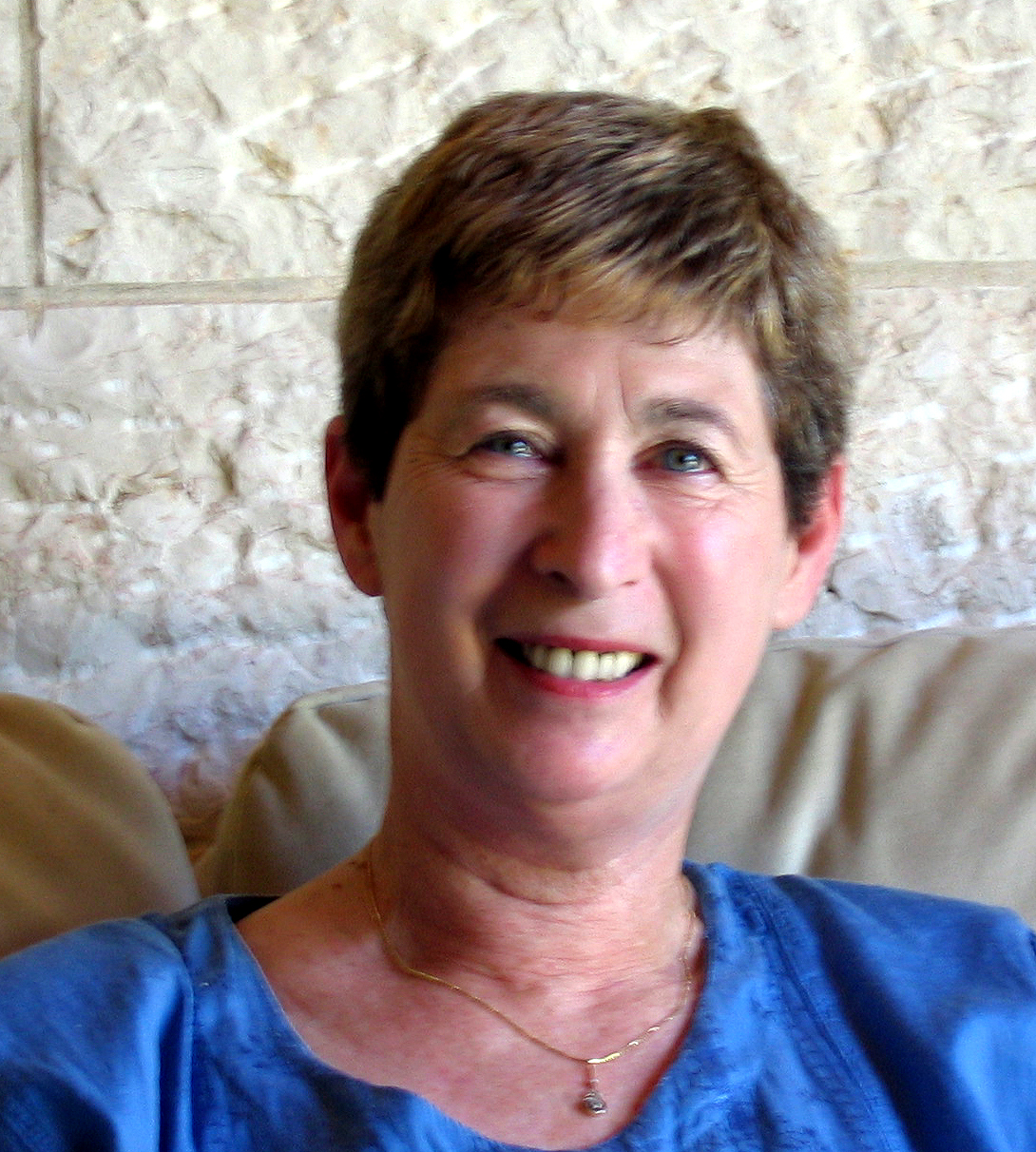

 Your specialist in
Your specialist in
 Jews
in the News
Jews
in the News

 The
Jewish
Citizen
The
Jewish
Citizen

